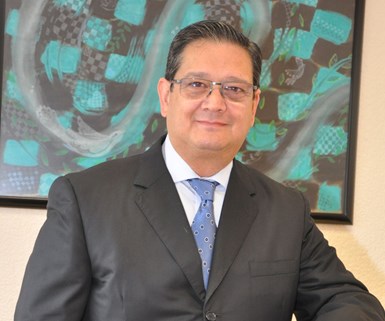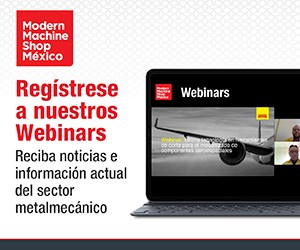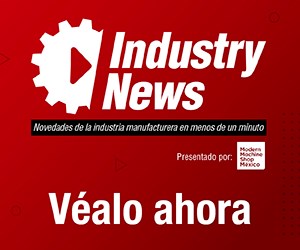The Opportunities for The Mexican Automotive Industry
The rules of origin of the USMCA, nearshoring and the possible implementation of the 232 rule by the United States, are some of the opportunities that the Mexican automotive industry has, according to Oscar Albin, president of the National Auto Parts Industry of Mexico (INA), to revive the dynamism in its production.

The statement is clear: no one will escape from the reduction of volumes by the contraction of the market. The challenge: not to sit around waiting for consumers to want to change cars and take advantage of opportunities to “pull that U and turn it into a V for us.”
On January 1 this year, vehicle sales in the three USMCA countries were projected at 16.5 million vehicles. However, according to Óscar Albin, president of the National Auto Parts Industry (INA), the latest forecasts indicate that by 2020 the volume will be no more than 12 million vehicles.
As for auto parts, projections indicate that, in the worst-case scenario, the reduction could be 40%. “Last year we were recording 98 billion dollars and this year we will be close to 50 billion”, explains Albin.
With this clear scenario, Albin assures that the return to the numbers of before will not be like the one that occurred in the crisis of 2008, when the recovery was V-shaped and, after a resounding fall, the industry was already fully recovered in 2010. “In this case, the best forecasts are that we will return to 2019 manufacturing volumes, somewhere around 2023. So there is a U and not a V, and that U is going to lead us to conditions of reduction of personnel, lines, and companies,” Albin says.

In addition, it's clear that you can't force the market to buy cars when it doesn't want to or can't buy them, but you can take advantage of the new USMCA rules of origin and the potential aggression or measures of the U.S. government to attract more car manufacturing investment to the U.S., and for that we will be ready to take advantage of its opportunities. To reduce the impact of these projected reductions, these are the opportunities that can be seized, according to Albin.
1. USMCA rules of origin
On July 1st, the renewed Mexico, United States and Canada Treaty (USMCA) went into effect, establishing an obligation for automotive companies to increase their regional content. The rule of origin conditions that cars and trucks must have a Regional Content Value of 75%.
“This applies especially to new vehicles that are going to be launched soon, because for a vehicle that goes in the face out you can’t do anything to change it, you keep producing it as it is. And it is better to pay a 2.5% tax for not reaching the regional content, than to try to change car parts of that vehicle, because simply re-testing those components is unaffordable,” explains Albin.
For Albin, the opportunity is in the new vehicles that are in the design stage and will be launched to the market in the next 2 to 3 years.
“They are going to be looking for more auto parts in the region than what they were previously getting. There we have an opportunity to absolutely increase our content per car,” he says.
2. Nearshoring and Rule 232
The second great opportunity that Albin sees has to do with the nationalism and desire to protect and stimulate local industries that all countries will experience once the pandemic is over. For example, Albin predicts that the United States will close down European and Asian markets and seek greater production in its territory to recover its own economy.
This is where the possible implementation of rule 232 for cars and auto parts comes into play. According to Albin, if this rule is applied, as it was done with steel and aluminum, a car manufactured in Japan would go from paying a 2.5% tax to 25% in order to be marketed in the United States.
“No one is going to buy a Japan-made Toyota car by paying 25% more. Maybe a Maserati or a Ferrari will, but a Toyota, a Mazda or a Hyundai made in Korea or Japan will not pay it,” he says. The alternative that these firms will have in order not to lose their market in North America will be to manufacture these vehicles on U.S. soil.
“Then, the new factories are going to come to the United States, and if they come to the United States, bingo! The Mexican auto parts industry will sell each car they manufacture in the United States for $4,000 to $5,000 per car. Today, a car made in Japan and shipped to the United States, Mexico does not even sell the air in the tires. While a Japanese car made in the United States sells $4,000 worth of Mexican auto parts,” Albin said.
These new factories will not arrive now but may in two or three years. If and when they do, Mexico will have the opportunity to provide auto parts for three million additional vehicles that it supplies today.
Lea a continuación
Mesas magnéticas optimizan la electroerosión en producción de piezas complejas
Evolución en Moldes venía asumiendo varios retos para el mejoramiento de sus procesos de manufactura de componentes complejos para sus moldes. La aplicación de mesas magnéticas optimizó el mecanizado por electroerosión y mejoró sus tiempos de entrega.
Leer MásPor qué usar torneado tipo suizo
¿Para qué clase de producción se usan los tornos tipo suizo? ¿En qué se diferencian de los centros de torneado convencionales? Expertos y usuarios cuentan sus experiencias.
Leer MásConsideraciones para comprar un torno CNC
Los tornos CNC son una de las tecnologías de mecanizado más antiguas; sin embargo, sigue siendo útil recordar los aspectos básicos a la hora de considerar comprar una máquina de este tipo.
Leer Más
.jpg;width=70;height=70;mode=crop)

















